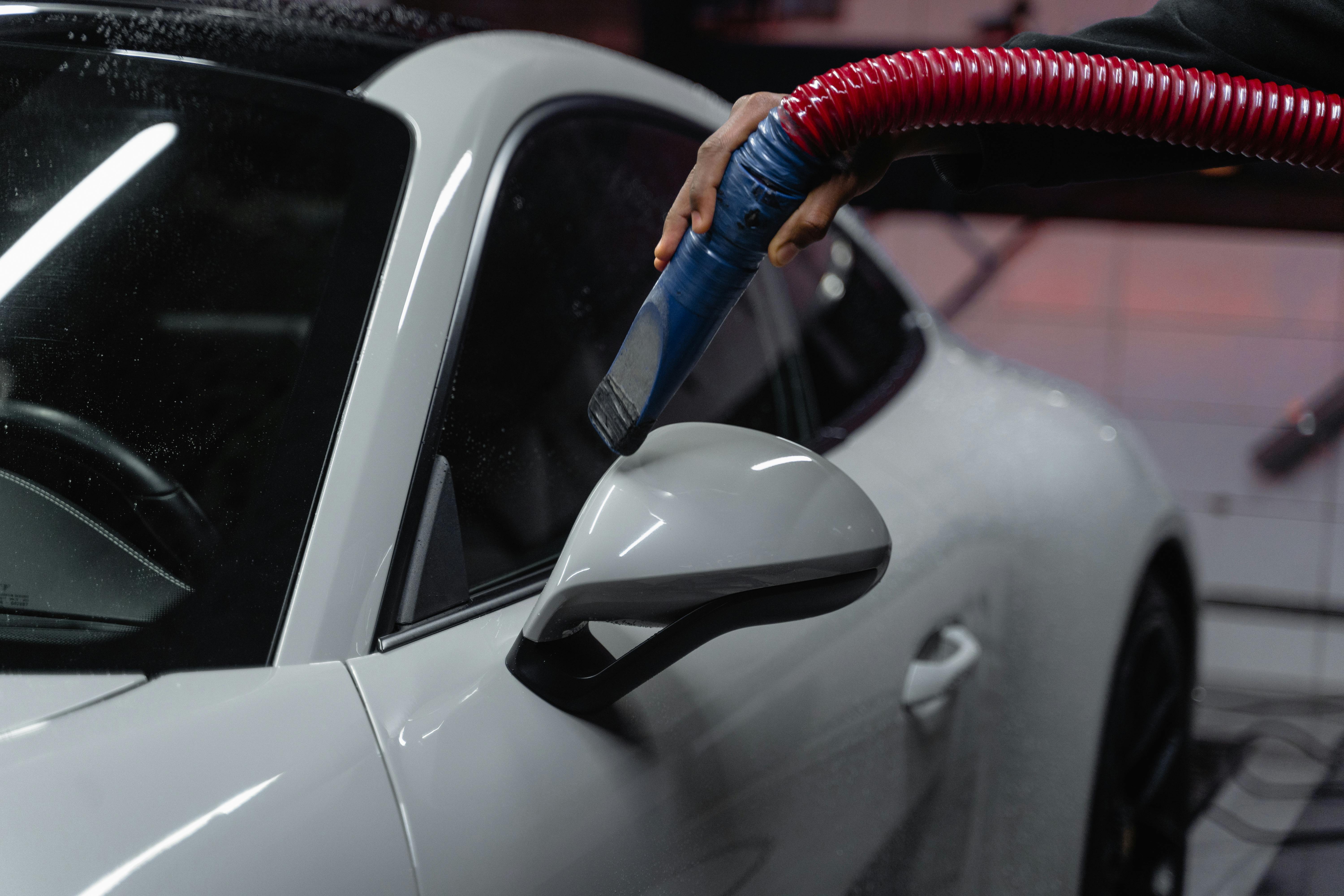Vacuum distillation is a process used to separate a mixture of liquids by using heat in a reduced pressure environment. This process works by boiling the components of the mixture at temperatures lower than their normal boiling points, allowing for the separation of materials that are not easily separable by conventional distillation techniques. The vacuum creates a reduced pressure environment in which the boiling points of the materials are lowered, allowing them to be separated more quickly and easily. The process is used in many industries, including chemical processing, petroleum refining, and food and beverage production.Vacuum distillation is a method of distillation used to separate liquids that have different boiling points. It works by heating the mixture under reduced pressure, which reduces the boiling point of the components and causes them to evaporate at much lower temperatures than what would be necessary under normal atmospheric pressure. This process is often used to refine crude oil into useful products such as gasoline, kerosene, and diesel fuel.
Advantages of Vacuum Distillation
Vacuum distillation is a process that utilizes a vacuum to lower the boiling point of the substance being distilled. This process has numerous advantages over more traditional methods of distillation. Vacuum distillation can be used to separate components from a mixture that would otherwise not be able to be separated due to their high boiling points. It also affords greater control over the temperature at which the components are distilled, allowing for more precise separation of desired components from undesired ones. In addition, vacuum distillation is far less energy intensive than other forms of distillation, making it an attractive option for those seeking energy efficiency and cost savings. Finally, vacuum distillation produces fewer by-products compared to other forms of distillation, making it an attractive choice for those looking for clean and pure products.
In short, vacuum distillation offers numerous advantages over traditional methods of distillation. It allows for greater precision in separating desired components from undesired ones, requires less energy to perform, and produces fewer by-products than other forms of distillation. For these reasons and more, vacuum distillation has become increasingly popular in many industries where
Vacuum Distillation Process
Vacuum distillation is a process of distilling liquids under reduced pressure, which decreases the boiling point of the liquid. This technique is mainly used to purify liquids that have high boiling points or decompose at their normal boiling points. Vacuum distillation is also used to separate mixtures of liquids where one component has a much higher boiling point than the other. It can also be used in combination with other techniques such as fractional distillation to achieve higher levels of purification.
The vacuum distillation process involves the use of a vacuum chamber which creates a low pressure or vacuum environment inside it. This reduces the atmospheric pressure surrounding the liquid, thus lowering its boiling point and allowing for an easier separation process. The chamber is connected to a heat source and a condenser, which are usually heated and cooled respectively by external sources such as steam or water.
The most common type of vacuum distillation is batch distillation, which involves heating and evaporating the mixture in batches until all components are separated. Continuous vacuum distillation works similarly but uses continuous heating and evaporation instead of batches.
Advantages of Vacuum Distillation Over Regular Distillation
Vacuum distillation is a process used to separate liquids from solids or other liquids. This process is used in many industries, such as refining petroleum and producing chemical compounds. Vacuum distillation offers several advantages over regular distillation, which make it an attractive option for a variety of applications.
One of the primary advantages of vacuum distillation is that it can be done at much lower temperatures than regular distillation. This is because the pressure in the system is reduced, allowing the boiling point of the liquid to be lowered significantly. Lower temperatures mean less heat-induced damage to delicate compounds, making vacuum distillation an ideal choice for working with sensitive materials.
Vacuum distillation also has a faster evaporation rate than regular distillation. Since there is less pressure to impede the evaporation, more material can be distilled in a shorter amount of time. This makes vacuum distillation an efficient choice when production needs to increase quickly or when working with large quantities of material.
In addition, vacuum dist
Vacuum Distillation
Vacuum distillation is a process used to separate components of a liquid mixture in which the pressure above the mixture is reduced, thereby lowering the boiling point of the mixture and allowing the components to be separated at a lower temperature. This process is useful for separating materials that would otherwise be difficult or impractical to separate by conventional distillation methods. The efficiency of this process depends on several factors, including the type of material being distilled, the pressure and temperature conditions, and other factors.
Type of Material
The type of material being distilled can have an effect on the efficiency of vacuum distillation. For instance, materials with higher boiling points tend to be more difficult to separate than those with lower boiling points. Additionally, materials that contain impurities or other contaminants may require additional processing steps before they can be effectively distilled.
Pressure and Temperature Conditions
The pressure and temperature conditions in which vacuum distillation is performed also play a role in its efficiency. Generally speaking, lower pressures and temperatures

Different Types of Vacuum Distillation Equipment
Vacuum distillation is a process used to separate liquids and solids from a mixture. This process involves heating the mixture under reduced pressure, which lowers the boiling point of the components, allowing them to be separated more easily. Vacuum distillation is widely used in the petroleum industry, but it can also be used for other applications. Different types of vacuum distillation equipment are available to suit different needs.
The most common type of vacuum distillation equipment is the batch still, which operates on a single batch at a time. The mixture is heated until it boils and then cooled to allow separation of the components. Batch stills are typically used for small-scale operations and are often relatively inexpensive.
Continuous stills are another type of vacuum distillation equipment that can be used for larger-scale operations. This type of equipment works by continuously feeding in the mixture and continuously withdrawing the separated components from the other end. Continuous stills are more expensive than batch stills but can offer increased efficiency and higher production rates. Vacuum distillation is a process used to separate and purify liquids that have low boiling points. The process utilizes a vacuum to lower the boiling point of the liquid, allowing it to be distilled at lower temperatures. While this process can be very useful, there are some safety considerations that must be taken into account when using vacuum distillation. One of the most important safety considerations when utilizing vacuum distillation is proper ventilation. Since the process involves volatilizing volatile organic compounds (VOCs) and other hazardous materials, proper ventilation is essential to reduce the risk of exposure. Additionally, it is important to use an appropriate exhaust system to ensure that any vapors released are properly filtered and exhausted safely away from the work area. Another safety consideration when using vacuum distillation is ensuring that all equipment used is appropriate for the job. This includes making sure that any pumps or other components used are rated for handling the pressure and temperatures involved in vacuum distillation. It is also important to make sure that any containers used can handle both high and low pressures associated with this process. Finally, Vacuum distillation is a process used to purify liquids. The process involves heating and cooling a liquid in an enclosed system, resulting in the separation of its components. While vacuum distillation is a reliable and efficient method of purification, it can still be prone to certain problems. Below are some of the common issues that may arise during vacuum distillation, along with some tips for how to troubleshoot them. One of the most common problems with vacuum distillation is the presence of steam bubbles. If too much steam is present, it can interfere with the process and lead to inconsistent results. To reduce the presence of steam bubbles, try reducing the temperature or pressure in the system. You can also adjust the rate at which you are adding heat to help reduce steam bubbles. Another issue you may encounter during vacuum distillation is foaming or frothing. This can occur if too much air or gas is present in the system, or if there are contaminants present that can cause foaming. To reduce foaming, try adjusting your temperature settings or reducing the Vacuum distillation is an effective and efficient way to separate components of a liquid mixture. It requires that the mixture be heated in a vacuum environment, which causes the components with the lower boiling points to evaporate more quickly than the components with higher boiling points. This allows the components to be separated from one another without needing to reach their actual boiling points. Vacuum distillation is used in a variety of industries, including chemical production, fuel refining, and oil production. In addition to its uses for separating mixtures, vacuum distillation can also be used to purify liquids by removing impurities from them. Vacuum distillation is a useful tool for separating complex liquid mixtures into their constituent parts and purifying liquids to create pure products. By understanding how vacuum distillation works and what it can do, scientists and engineers can make use of this powerful technique in their work.
Troubleshooting Common Problems with Vacuum Distillation

Conclusion

